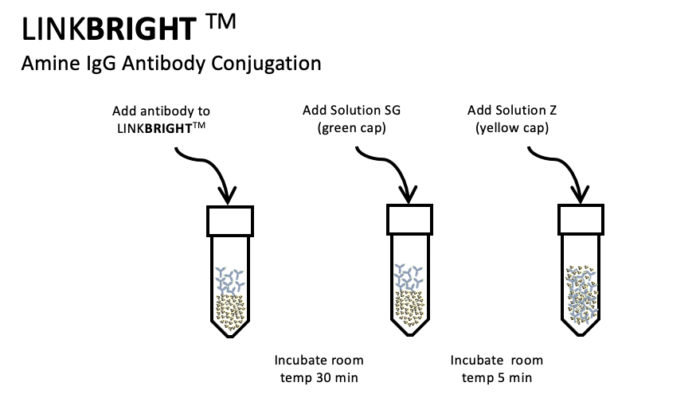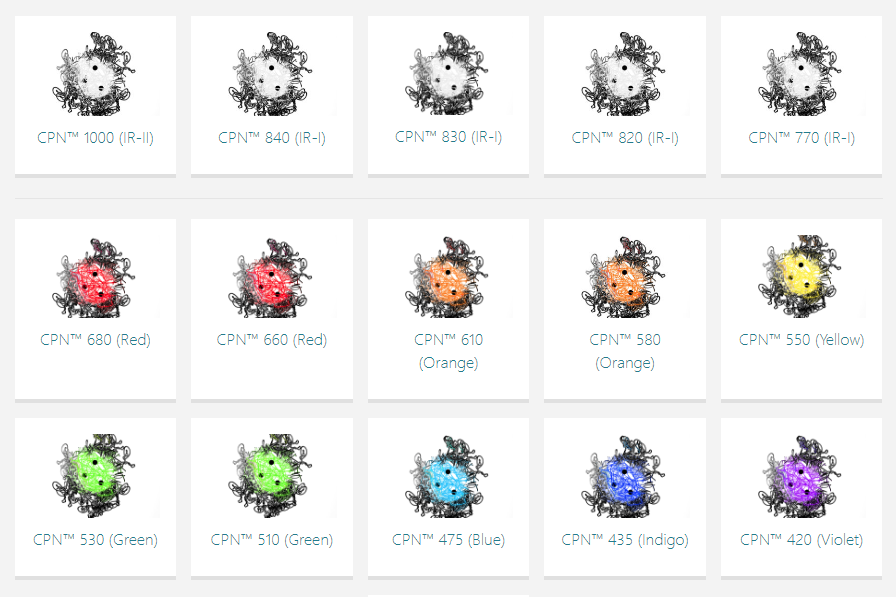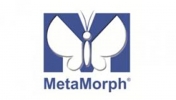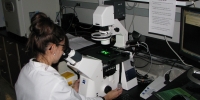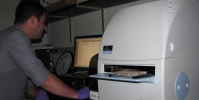StreamBioUK LinkBright CPN kits
StreamBioUK LinkBright CPN kits at Sigma-Aldrich January 2023
https://www.streambio.co.uk/linkbright-kits/
https://www.sigmaaldrich.com/US/en/substance/conjugatedpolymernanoparticlecpn1234598765
20221201Thur: Summary -- why this is interesting to me and maybe to you: potential for "one antibody (or oligo) --> one BRIGHT dot" in fluorescence microscopy. The CPNs have metal core, so can be "pulled down" by a magnet (and released by removing the magnet). I suspect the metal core is also reflective, so could use reflection imaging -- unlimited light budget! -- to see all "colors" and fluorescence to separate colors (diameter of entire CPN is ~70-80nm, so could be 'pretty bright' by reflection).
The CPNs -- Conjugated Polymer Nanoparticles -- MAY enable "single molecules fluorescence microscopy" of single Antibody-CPN and/or single oligo-CPN. For single molecule RNA FISH (or DNA FISH) it would still be prudent to have several CPN-oligos binding to one RNA molecule, since any given RNA molecule 'binding site' (say 20 base sequence) might be occluded by RNA binding protein(s), secondary structure, or other. I suggest "10 oligos per target" likely enough, so if (say) five sites occluded on any one RNA, then five CPN-oligos binding would be "plenty bright".
IF CPN-Ab, (CPN-oligo)10, etc really are very bright, and photostable, and do not have the problems of classic quantum dots (antibody aggregates, reactive oxygen species generation, blinking [of course blinking could be useful for some SMLM methods), then potential for one CPN --> one super-resolution localization in single image frame ... unlike 10,000 frame PALM/STORM single molecule localization microscopy (SMLM) experiments, which are typically one framae is 10 to 100 milliseconds, so 10,000 frames is 100 to 1000 seconds -- and work because 99.99x% of the fluorophores are "off" in any single frame. In fact, sparseness is key for standard SMLM localization.
Precision localizaton is proportional to sqrt(N) photons, equivalently, sqrt(N) intensity levels readout from microscope detector(s). Example: if resolution of objective lens is XY= 214 nm (d=0.61*500nm/1.4NA) then "PL" is 214/sqrt(#photons), so if 100 photons, PL = 214/(sqrt(100) = 214/10 = 21.4 nm, and if 10,000 photions, then 2.14nm. For comparison, an antibody is 10nm length (tips of Fab to Fc). size of CPN is approximately 70-80nm (https://www.streambio.co.uk/our-technology/). The Antibody (IgG) length is referred to as "linkage error" (really linkage uncertainty) in the SMLM literature. This can be strunken by using Fab fragment, scFv (single chain fragment variable) or nanobody, instead of full length IgG. The Fab/scFv/nanobody could also have adhvantage of only one conjugation site (i.e. COOH terminus) to guarantee 1 CPN:"binder".
I also want to note that an interesting approach for get more sparseness from CPNs (or quantum dots, or standard dyes for that matter) is to conjugate the SAME antibody (Fab, scFv, nanobody) product to SEVERAL different 'color' CPNs. For example, if generate 10plex, then sparseness is 1/10th for each (on average). The cleanest way would be to run 10 LinkBright reactions on appropriate amount of primary antibody, such as anti-EGFR. Perhaps StreamBio UK could make (and get over to Sigma-Aldrich) a "LinkBright Rainbow" (or their marketing dept come up with better name) of (say) 1./10th amounts of each of the 10 CPN "colors" that would be most practical to image research fluorescence microscopes ... such as FISHscope or our confocal microscopes.
LinkBright product line has been available direct rom Stream Bio UK - but shipping cost ("cold chain" shipping) was about the same amount of money as the product -- this would be like buying a car for $25,000 and paying $25,000 to get it from the factory to your home. Unknown whether Sigma-Aldrich will integrate overseas shipping costs into the product pricing ... so you may want to compare Stream Bio UK direct (with cold chain chipping) to U.S. Sigma-Aldrich total price (product plus ship from them).
Visuals
